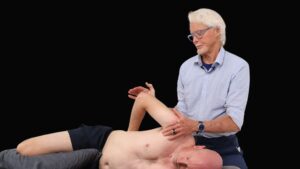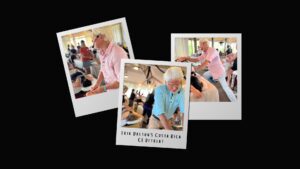Below is an excellent article by Sage Briggs and here’s a link to a blog that relates to Predictive Coding: https://erikdalton.com/blog/cant-teach-experience-2/

How predictive coding is changing our understanding of the brain
The brain continually generates models of the world around it in order to predict the most plausible explanation for what’s happening in each moment. Cognitive psychologists call this process predictive coding, and they now believe it can account for most of what’s going on in the brain. The problem is, the brain sometimes gets it wrong, and this discrepancy can result in everything from mild cognitive dissonance to learning disorders to anxiety and depression.
Let’s take a look at how predictive coding works and why it’s being considered a “grand unified theory of cognition” in many scientific circles, as well as a promising framework for understanding the mental health benefits of psychedelics.
What Is Predictive Coding?
The long-standing classical view of perception maintains that we experience the world in three steps: 1) receive input from our environment; 2) process input in higher levels of brain; 3) respond to input accordingly. But an alternative theory has been gaining ground as a more accurate explanation for what’s going on: not only does information flow from our senses to our higher faculties, but those higher faculties often “predict” the input from our environment, thereby influencing our perception of it before we actually sense it. This is called predictive processing, or predictive coding.
“You experience, in some sense, the world that you expect to experience,” says Andy Clark, a cognitive scientist at the University of Edinburgh in Scotland. “All experience is controlled hallucination.”
The purpose of predictive coding is to help us organize our experience of the world as efficiently as possible. Otherwise, life would be a bit of a struggle. Imagine if every time you looked at a tree, it was as if you were seeing a tree for the first time, or couldn’t simply categorize bark as bark but were constantly in awe of the different texture and color of each tree trunk or branch you saw while walking through a forest. Our predictive brains help us see trees as trees, hardly without even looking at them, so that we can quickly put that “old” or “irrelevant” information into a box and move on. A good comparison would be the way a computer stores video files, which contain enough redundancy from one frame to the next that it’s more efficient to encode the differences between adjacent frames and then work backward to interpret the entire video than to encode every pixel in every image when compressing the data.
Although we may think we have really “looked at” the trees around us, we don’t truly see them unless we make a point of paying more attention. For all intents and purposes, the trees are just perceptive models generated by the brain until we really look at them. Even when we do take a closer look, what we perceive is heavily influenced by what we expect to see. And sometimes what we expect to see may not represent the full picture.
“If the brain is an inference machine, an organ of statistics, then when it goes wrong, it’ll make the same sorts of mistakes a statistician will make,” says Karl Friston, a neuroscientist at University College London. “That is, it will make the wrong inferences by placing too much or too little emphasis on either predictions or prediction errors.”
That’s why the best evidence for the predictive coding model can be found in cases where the brain predicts too much or too little. Individuals with autism would presumably have a weak predictive filter, meaning they have a harder time categorizing trees as trees and moving on. Instead, they get caught up in the texture of the bark. This would explain their extreme sensitivity to input from the environment: Everything is surprising and new, which can be overwhelming. On the other end of the spectrum is schizophrenia, which reflects an overly strong predictive filter: If your brain is too certain about what it’s looking at, it will override new information with its own beliefs and create false perceptions (read: hallucinations). Most of us are somewhere in the middle of the spectrum. That is, unless we do (or take) something to change our brain chemistry.
A research team at the University of Minnesota explains: “Psychedelic drugs perturb universal brain processes that normally serve to constrain neural systems central to perception, emotion, cognition, and sense of self.”
So why does any of this matter? What does it change? The short answer is, a lot. The above examples are all very neutral, but when deeper aspects of life like your sense of self or your perception of other people become involved, that contrast or “prediction error” can be a highly emotional experience. For example, the concept of seeing other possibilities is extremely useful when it comes to psychotherapy. Neuroscientists now have reason to believe that psychedelics work to treat conditions like depression and anxiety by influencing the mechanics of predictive coding in this way. One theory is that they stop us from habitually and rigidly predicting future scenarios (anxiety) and future selves (depression), instead of opening our minds up to alternative ways of perceiving the situation.
In order to learn new things, the predictive mechanism must be reduced to some extent, but in order to retain new information and use it in the future, we need to generate a predictive model of that information. Somewhere in between, in a delicate balance of these two processes, lies optimal learning and memory.
Research on predictive coding and working memory capacity provides some good insight into how this might operate. As the current theory has it, when working memory capacity starts to break down, it’s not because our brain gets “too full”; it’s because we can no longer efficiently predict and categorize incoming information. The burning question, then, is this: If we can train our brains to better categorize information before we receive it, can we enhance working memory capacity?
In the same breath, can we learn more by reducing our urge to predict and categorize the information around us so quickly? Does “openness” or “open-mindedness” lead to greater learning because it prevents us from putting information in a box and moving on, and lets us linger and see things from different perspectives, leading to deeper and more complex observation?
Changing the Language We Use
The underlying theme here is balancing predictions with possibilities. Can we teach ourselves how to do this in the context of various mental processes and states of mind such as learning, memory, anxiety, and depression?
One big first step in this experiment is to change the language we use: To what extent do we “predict” ourselves and the people around us, and how does that affect our happiness and success in the world? What can we do to increase our perception of “possibility,” to introduce awe and surprise into our lives, whether it’s shaking up our routine or meditating on a more desirable state of mind?
Article written by Saga Briggs









